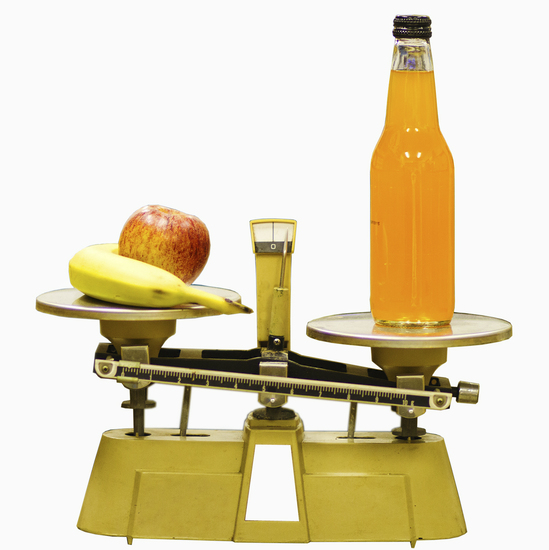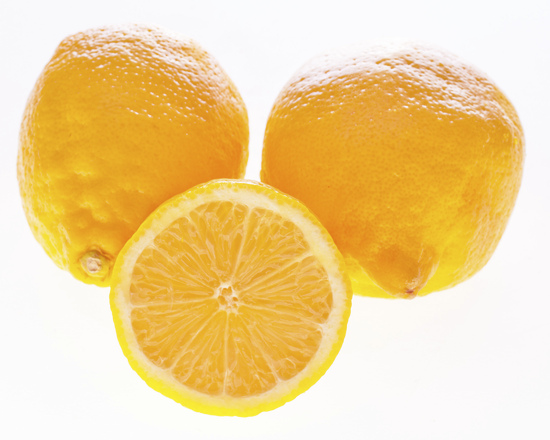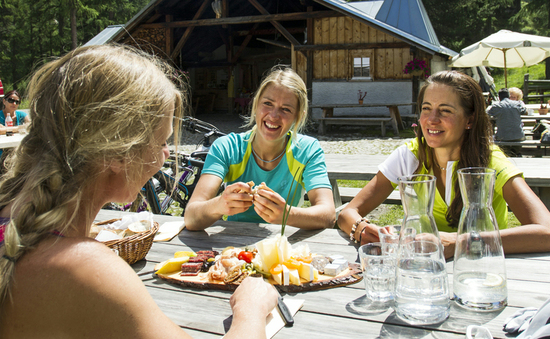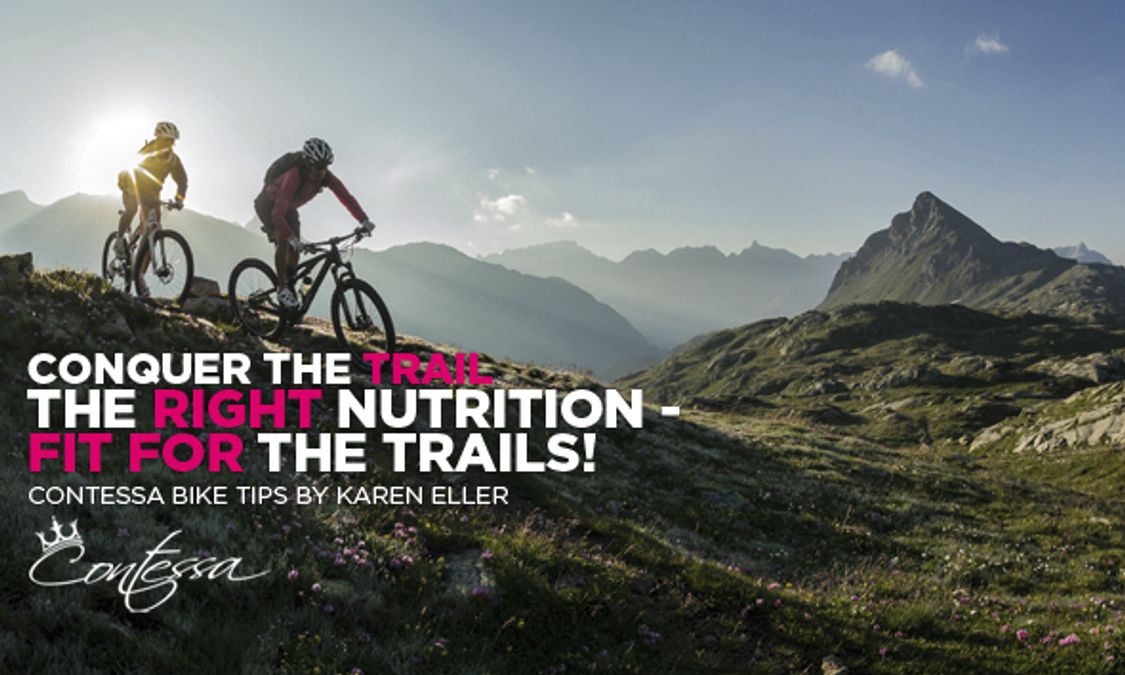Conquer the Trail - The Right Nutrition: Fit for the Trails!
Most girls end up by chance in the world of mountain biking . Often times it is due to influence from a brother or a boyfriend- rarely do they choose to participate in the sport themselves. Nowadays, the combination of sports and exercise in nature is attracting more and more women to bikes. Biking makes you fit, lean, gives you well-defined muscles burns fat. In addition, it is great fun and has more variety than any other sport. Here are a few tips on proper nutrition for biking.
It is scientifically proven that women are more likely to accumulate fat than men. It takes more time for the female metabolism to get accustomed to higher training volumes. This is precisely why women should pay more attention to quality nutrition.
 Biking is a constant game of gravity. Each extra pound holds you down on the uphills. This is true for the bike, the gear in the backpack, and also for your own body weight. Training can be accompanied by sticking to a nutritious diet to realize even more gains. To lose weight, you have to improve your fat metabolism. For most of the people who don’t work out, your metabolism is not in its optimal state. Your daily requirement of calories is usually more than covered. As a result the reserves will not be used because fat is removed only after prolonged exposure and / or longer meal breaks. By training the muscles (active body mass), the daily need of calories increases. A unit of muscle has 25 times more fat metabolism that the same size unit of fat. Building muscle in the long term will make you lose weight. At onset of training, beginners can temporarily gain weight, since the body first builds muscle and then later melts the fat. Remember, muscle weighs more than fat!
Biking is a constant game of gravity. Each extra pound holds you down on the uphills. This is true for the bike, the gear in the backpack, and also for your own body weight. Training can be accompanied by sticking to a nutritious diet to realize even more gains. To lose weight, you have to improve your fat metabolism. For most of the people who don’t work out, your metabolism is not in its optimal state. Your daily requirement of calories is usually more than covered. As a result the reserves will not be used because fat is removed only after prolonged exposure and / or longer meal breaks. By training the muscles (active body mass), the daily need of calories increases. A unit of muscle has 25 times more fat metabolism that the same size unit of fat. Building muscle in the long term will make you lose weight. At onset of training, beginners can temporarily gain weight, since the body first builds muscle and then later melts the fat. Remember, muscle weighs more than fat!
Girl power with the right food and drink - The small difference on the plate
With certain things women have to make the best out of what they’ve got, as has always been recommended by Berthold Brecht . He is still right after all of these years. Women need qualitatively the same nutrients as men, but quantitatively there are big differences. For example, the amount of nutrients required by a woman is higher than a man, as when speaking about dietary iron. Sometimes it is lower, for instance with energy, which is represented by calories.
The small difference No.1 – Burning calories
The lower energy consumption of women is caused by the different composition of the female body. The proportion of fat free body mass is genetically determined to be lower in women than in men. Because fat tissue is not metabolically active, as opposed to muscle tissue, less energy is consumed. In addition, men weigh more on average and are slightly larger than females. A larger body with more muscle allows men more “calories sins” without having to pay for them with obesity and weight problems.

The small difference No. 2 - dietary iron
Women need more iron than men because of the menstrual period. Another factor driving the need for iron is regular training which causes a loss of iron with through sweating. One liter of sweat from the body excretes 0.5-1.0 mg of iron. The result is that a portion of the ingested iron is directly lost through sweat.
Why do we need iron?
Iron is essential for life and especially important for athletes as it combines with oxygen to move through the body and into the cells. Iron deficiency means loss of power. By oxidation of carbohydrates, fats and proteins, which are included in your diet , energy is produced. Too much iron is rare and would have negative effects on the body.
What options are there to prevent an iron deficiency?
 Despite the increased need, you can attain the required amount of iron through a balanced diet while not exceeding the amount of necessary calories. The main sources of iron are meat, poultry and fish. Good sources of iron in vegetarian food are vegetables, cereals or dried fruits. The absorption of iron depends on the form in which the iron is presented . The body can better utilize divalent forms such as meat, poultry and fish. The trivalent form of the iron is found in vegetables. The body doesn’t absorb it as well. However, there are ways in which the absorption of trivalent iron can be improved, for example by the combination of vegetable with vitamin C. An acidic environment, such as a glass of lemon or orange juice, also supports absorption and additionally contains vitamin C.
Despite the increased need, you can attain the required amount of iron through a balanced diet while not exceeding the amount of necessary calories. The main sources of iron are meat, poultry and fish. Good sources of iron in vegetarian food are vegetables, cereals or dried fruits. The absorption of iron depends on the form in which the iron is presented . The body can better utilize divalent forms such as meat, poultry and fish. The trivalent form of the iron is found in vegetables. The body doesn’t absorb it as well. However, there are ways in which the absorption of trivalent iron can be improved, for example by the combination of vegetable with vitamin C. An acidic environment, such as a glass of lemon or orange juice, also supports absorption and additionally contains vitamin C.
The small difference No. 3 - Calcium
Women are seven times more susceptible than men to bone fractures. The main cause is a primary calcium or bone metabolism disorder called osteoporosis. This can be attributed not only to changes in hormone levels in postmenopausal women, but also due to an inadequate calcium intake. Physically active women suffer from additional calcium losses through sweat. Also, excessive meat consumption may lead to a lack of calcium. The more protein an athlete gets, the higher the calcium excretion in urine. An adequate supply should be ensured, so that a calcium deficiency cannot develop. A quantity of 800 - 1200 mg of calcium per day is recommended . Milk and dairy products are good sources along with drinks with a good calcium content. Mineral waters with a calcium - magnesium ratio of 2:1 are suitable as well.

The small difference No. 4 - Zinc
In sports relevant nutrition, zinc plays a key role in the human body. In addition to muscular performance, zinc regenerates the immune system and is of great importance in wound healing. Physically active women have a higher consumption, because zinc is increasingly lost through sweat and urine. Increased zinc excretion is also related to the menstrual period. High zinc loss reduces efficiency, weakens the body and makes the body more susceptible to infections. Foods of animal origin such as meat, fish, milk and dairy products are good Zinc resources. The usual sports nutrition diet includes carbohydrate-rich, plant-based foods in the form of noodles, rice , potatoes, bread, fruit and vegetables, but these contain only small amounts of zinc. In order to secure optimal zinc supply, enteric-coated zinc supplements from the pharmacy can help.
The small difference No. 5 - Oral contraceptives (birth control pills)
Oral contraceptives (birth control pills), in addition to the desired effect, can affect the utilization of nutrients. Thus, there is an increased need for vitamins B2 , B6 , B12, and C. Therefore, foods that have a high density of these vitamins should be selected. Cereals, vegetables, dairy products and fish contain a high level of these vitamins per calorie.

The right nutrition + good training = Fit for the trails!

Karen Eller
Episode 1: How to choose the right bike
Episode 2: Right Preparation for the season
Episode 3: How do I set up my bike correctly?
Episode 4: What equipment do I really need?
Episode 5: Skills come with practice
Episode 6: Riding Techniques for Advanced Riders
Episode 7: How do I lose my Fear?

